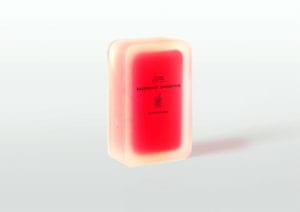Inspiration:
Whilst researching, I stumbled upon “Tomorrowmachine”. This is a Swedish company who came out with a line of sustainable food packaging called “This too shall pass”. They also used all natural materials such as sugar, wax, oil and agar. This set of food packaging really caught my attention as it not only decomposed together with the food, but it had an incredibly creative, innovative design.

Proposal:
For my final, I really want to focus on food/beverage packaging. Just from a quick Google search, no matter which site you go to, food packaging always comes out as the top of the list of plastics in oceans and our natural environment. It is something that I also find extremely frustrating in my everyday life. Now that I do my own grocery shopping every week, I am reminded of how much unnecessary plastics that grocery stores and companies package their food in.
Idea #1 — Fruit Styrofoam Packaging

During last week’s lecture, our group conducted an experiment involving agar and made a thin sheet of plastic. I’m hoping to use this concept to recreate fruit styrofoam. One of the pieces from Tomorrowmachine’s line of sustainable packaging features a juice box made out of agar. It was very jelly-like which would be the perfect material to protect fruit.

Hypothesis:
Is it possible to make agar bioplastic that thick and have it be able to be wrapped around the fruit?
Is there a more innovative way to protect fruit, reducing the amount of materials needed to be created?
Can this fruit styrofoam be reused into something else before it is decomposted?
Idea #2 — Milk Casein Cup holders
Tessa Silva-Dawson currently makes a series of cups, vases and other vessels using this the casein of milk. From the images shown on her website and online, it’s quite surprising how she made these beautiful pieces all from milk. Hence, this is not only something that is more sustainable, but customers would be willing to purchase it just from the design of it alone.
Tessa Silva-Dawson uses milk as substitute for hydrocarbon plastics

One of the most convenient, but another very wasteful form of packaging are beverage cup holders. Professor Marcela herself is working on potential ones right now using coffee for the 2F cafe’s metallic cups. I also want to try to make these cup holders, except using the milk casein. I did some research on this bioplastic in another week where this method has actually been used before our modern plastic. Hence, I know that this is a solid way to make bioplastics. What would be problematic is whether or not this material is the best as a cup holder.
Hypothesis:
Would this material be suitable as cup holder?
How would it fair with very hot or cold drinks?
Would additional cloth or other materials be needed?
Leave a Reply